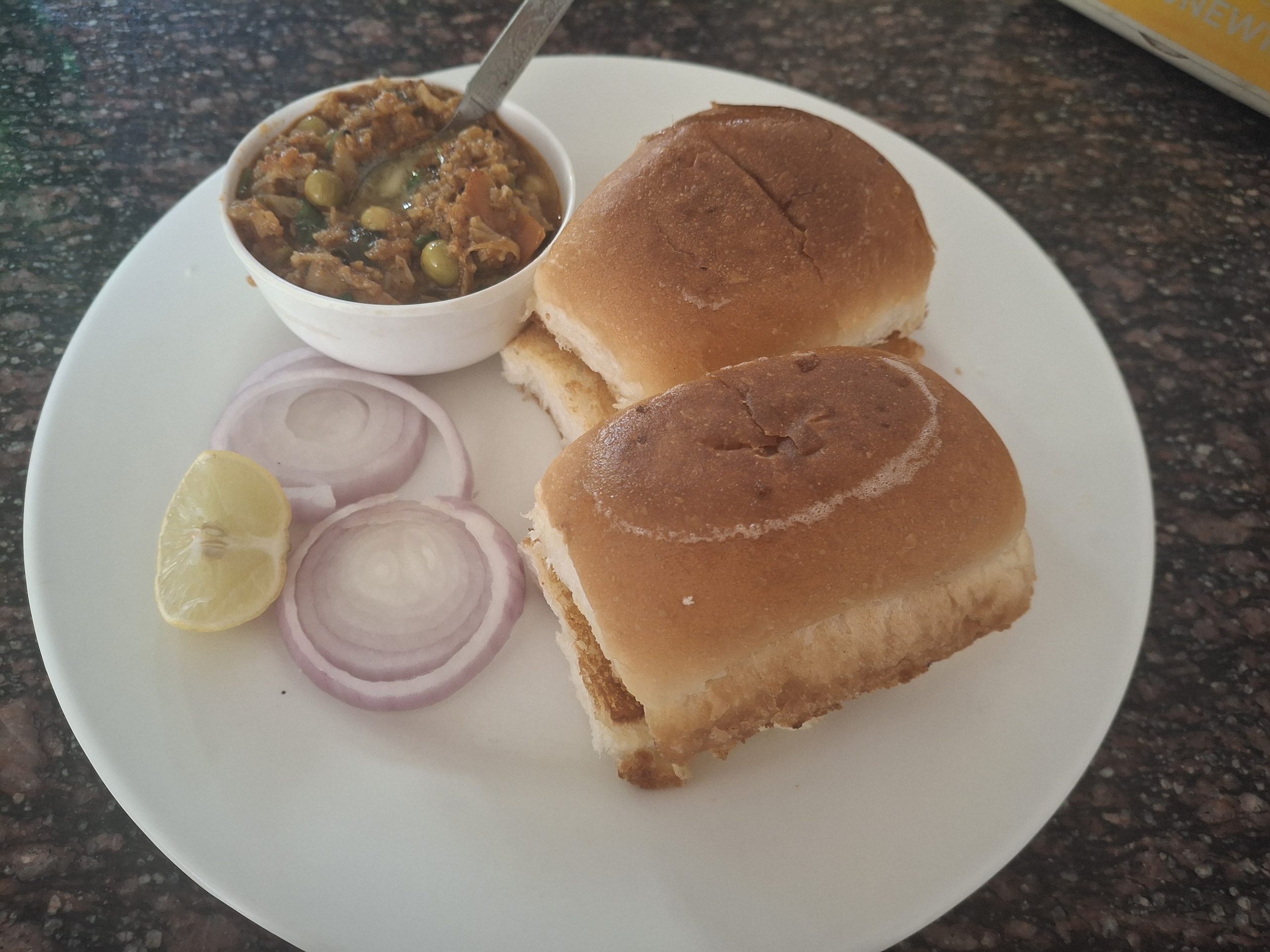Pav Bhaji

When it comes to Indian street food, few dishes capture the heart and soul quite like Pav Bhaji. This vibrant, spicy, and buttery delight is a staple across India, particularly in Mumbai, where it originated. Whether you’re strolling through bustling markets or grabbing a quick bite at a roadside stall, the aroma of dish simmering on a hot tawa (griddle) is impossible to resist. In this blog, we’ll dive into the magic of the delicacy, explore its cultural significance, and, most importantly, share an authentic recipe to bring this street food gem to your kitchen.
Why Pav Bhaji Stands Out
Unlike many other street foods, it is both indulgent and wholesome. The bhaji (vegetable curry) is packed with nutritious veggies like potatoes, cauliflower, and peas, while the generous dollop of butter adds a sinful richness. Moreover, the pav, toasted to golden perfection on a tawa, soaks up the bhaji’s flavors, creating a heavenly bite. Topped with fresh onions, coriander, and a squeeze of lemon, it’s a dish that dances on your taste buds.
Another reason for its popularity is its accessibility. From roadside carts to upscale restaurants, pav bhaji is everywhere. In fact, it’s a favorite at celebrations, from family gatherings to late-night cravings. Furthermore, it’s vegetarian, making it a go-to choice for India’s diverse population.
How to Make Authentic Pav Bhaji at Home
Now that you’re craving pav bhaji, let’s bring this street food magic to your kitchen. Below is a tried-and-tested recipe that balances authenticity with simplicity. Don’t worry if you’re new to Indian cooking—this recipe is beginner-friendly and bursting with flavor.
Ingredients (Serves 4)
For the Bhaji:
-
3 medium potatoes, boiled and mashed
-
1 cup cauliflower florets, boiled and mashed
-
½ cup green peas, boiled and mashed
-
1 medium green bell pepper, finely chopped
-
2 large tomatoes, finely chopped or pureed
-
1 large onion, finely chopped
-
1 tablespoon ginger-garlic paste
-
2 green chilies, finely chopped (adjust to taste)
-
3 tablespoons butter (plus extra for serving)
-
1 tablespoon oil
-
2 tablespoons pav bhaji masala (available at Indian stores or online)
-
1 teaspoon red chili powder (optional, for extra heat)
-
½ teaspoon turmeric powder
-
Salt to taste
-
1 cup water (adjust for desired consistency)
-
Juice of half a lemon
-
2 tablespoons fresh coriander leaves, chopped (for garnish)
For the Pav:
-
8 pav buns (or soft dinner rolls)
-
2 tablespoons butter
-
½ teaspoon pav bhaji masala (optional, for extra flavor)
For Serving:
-
Finely chopped onions
-
Lemon wedges
-
Fresh coriander leaves
-
A dollop of butter (optional)
Instructions
-
Prepare the Vegetables: First, boil the potatoes, cauliflower, and green peas until soft. Mash them coarsely and set aside. This step ensures a smooth yet chunky bhaji texture.
-
Cook the Base: In a large pan or tawa, heat 1 tablespoon oil and 2 tablespoons butter over medium heat. Next, add the chopped onions and sauté until golden brown. Then, stir in the ginger-garlic paste and green chilies, cooking for a minute until aromatic.
-
Add Tomatoes and Spices: After that, add the chopped or pureed tomatoes and cook until the mixture turns mushy and oil begins to separate. At this point, sprinkle in the pav bhaji masala, red chili powder (if using), turmeric powder, and salt. Stir well to combine, letting the spices release their aroma.
-
Incorporate the Vegetables: Now, add the mashed vegetables and chopped bell pepper to the pan. Mix thoroughly, using a potato masher to blend the veggies with the spice mix. Gradually add water to achieve your preferred consistency—bhaji should be thick but not dry. Simmer for 8–10 minutes, stirring occasionally.
-
Finish the Bhaji: Once the bhaji is well-cooked, add a tablespoon of butter and lemon juice. Stir to combine, then garnish with fresh coriander leaves. Keep the bhaji warm while you prepare the pav.
-
Toast the Pav: Heat a tawa or skillet over medium heat. Add a teaspoon of butter and a pinch of pav bhaji masala (optional). Slice the pav buns horizontally and toast them in the butter until golden and crisp on both sides.
-
Serve Hot: Scoop a generous portion of bhaji onto a plate, top with a dollop of butter (if desired), and sprinkle with chopped onions and coriander. Serve alongside toasted pav and lemon wedges for squeezing.
Tips for the Perfect Pav Bhaji
-
Use Fresh Ingredients: Fresh vegetables and good-quality masala elevate the dish.
-
Adjust Spice Levels: Reduce green chilies or skip red chili powder for a milder version.
-
Butter is Key: Don’t skimp on butter
-
Experiment: Add veggies like carrots or beans for a twist, but keep the base flavors intact.
The Joy of Eating Pav Bhaji
As you dig into a plate of pav bhaji, the first bite is pure bliss. The spicy, buttery bhaji pairs perfectly with the soft, toasted pav, while the crunch of onions and zing of lemon tie it all together. Whether you’re recreating a Mumbai street food experience or introducing friends to Indian cuisine, pav bhaji never disappoints.
In conclusion, pav bhaji is more than just food—it’s a celebration of flavors, culture, and community. So, gather your ingredients, fire up the stove, and let the aroma of pav bhaji fill your home. Trust me, one bite, and you’ll understand why this dish is a beloved Indian classic.
Happy cooking, and enjoy your pav bhaji adventure!
